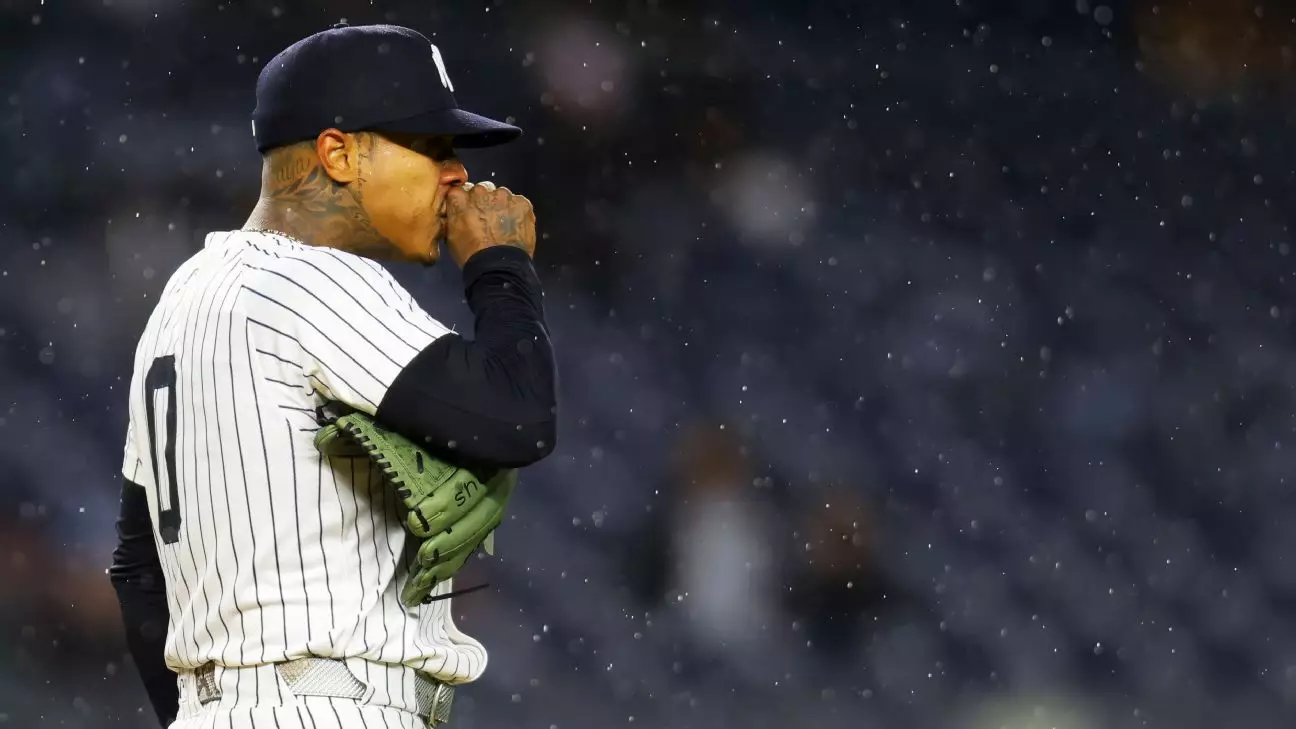Marcus Stroman, a prominent pitcher for the New York Yankees, finds himself ensnared in the relentless grip of injury recovery. Having suffered a left knee injury that has kept him out of the game for over a month, recent assessments reveal he is still grappling with discomfort post rehabilitation. This situation not only affects Stroman’s career but also raises alarm bells among Yankee fans and management alike, hinting at deeper implications for the team’s pitching lineup throughout the season.
Manager Aaron Boone conveyed the precarious state of Stroman’s recovery, stating that despite numerous treatments, the pitcher has barely managed to inch past the discomfort he has been experiencing. It’s a heartbreaking scenario for a player who once showcased remarkable resilience; however, this recent news reminds us that professional athletic careers can be incredibly fragile. As Stroman embarks on a reevaluation path, one can’t help but sense the irony in a sport where precision is everything, yet one misstep or injury can derail everything an athlete has fought to attain.
The Last Performance: A Precursor of Trouble
Stroman’s last outing on the mound against the San Francisco Giants was disheartening. He was pulled after just two-thirds of an inning, having surrendered five runs—numbers that indicate deeper issues rather than a mere off-day. Before succumbing to injury, he had already been struggling, posting an alarming 11.57 ERA across three starts. This catastrophic performance may not be simply attributed to bad luck; Boone’s remarks suggest that there was indeed a physical limitation hindering his ability to perform at peak capacity.
“We talk about how these guys are like race cars, and one little thing off can affect that last level of command,” Boone noted. This analogy resonates deeply—Stroman, like a finely-tuned machine, requires every cog and gear to function perfectly. When one aspect falters, even a seasoned player can experience dramatic performance dips. Thus, it raises the question of how many overlooked injuries go unaddressed in the players, especially when they are pressured to deliver in highly competitive environments.
A History of Resilience
Stroman’s current challenges are reminiscent of his journey through previous adversities. After undergoing surgery to repair a torn ACL in his left knee in March 2015, he displayed a remarkable turnaround, returning to the major leagues later that same year. But the road hasn’t always been smooth—this injury serves as a reminder that athletes often carry the mental weight of past injuries, which can manifest both physically and psychologically during their careers. As a veteran player, Stroman has had to cultivate a mindset that balances immediate recovery with long-term performance sustainability.
At 34 years old and in the second season of a lucrative $37 million contract, the stakes have never been higher. His existence in the league is increasingly governed not just by performance, but by his ability to navigate the fine line between pushing through pain and acknowledging limits. The looming conditional player option for 2026 adds another layer of urgency, as he needs to pitch a minimum of 140 innings this season to activate it. Therefore, the pressure to perform becomes a dual-edged sword.
The Broader Implications for the Yankees
Stroman’s challenges extend far beyond his individual performance; they serve as a microcosm of the Yankees’ broader pitching strategy. The team’s depth is being tested as they strategically plan for their postseason aspirations. Given that the Yankees made it to the World Series last season for the first time since 2009—with Stroman sidelined during that critical juncture—the organization must recalibrate its approach to player health and risk management.
Injuries to key players, including recent updates on DJ LeMahieu’s hip condition, underscore a reality that teams must grapple with: the quest for a championship is fraught with physical hurdles. Engaging in an adequate recovery process and building a resilient team culture are paramount if they hope to compete at the highest level.
Stroman’s journey through this injury crisis holds valuable lessons about the intersection of talent, health, and teamwork. As sports constantly evolve, it becomes imperative for organizations to adapt their strategies not just to account for performance, but to embrace the human aspect of their athletes. In attempting to return to form, Stroman embodies the struggles and triumphs that color the landscape of professional sports.

